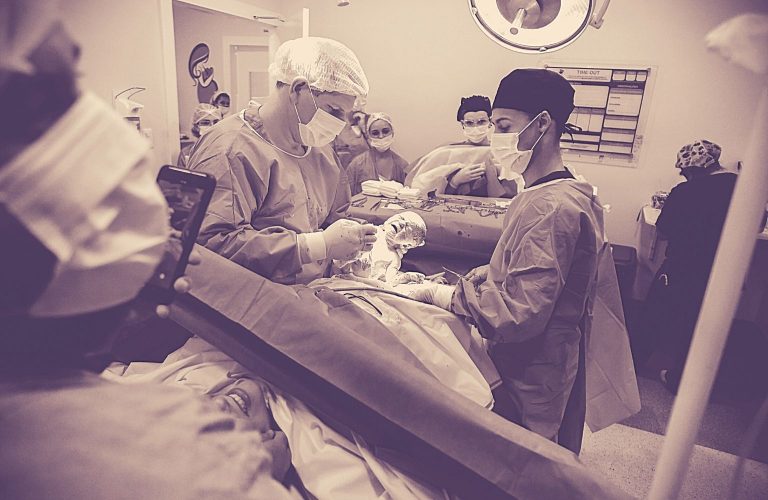You have prepared for your birth. You’re informed and approaching your due date. You’re excited and nervous and hopeful and anxious and feeling ready for baby to join (or maybe not quite yet!).
Every birth is different and it’s hard to know what to expect.
One thing before we get started. Sometimes people think that they don’t need to prepare for birth because they plan on getting an epidural. But there’s a pretty good chance you’re going to have to labour at least a little while before you get an epidural – so why not make that wait a little more enjoyable?
Also, a lot of these tips involve being able to move. Mobility in childbirth can be impacted by a few things and so these tips won’t always be applicable.
Mobility may be impacted by:
- Epidural: Most, if not all hospitals won’t have staff with the time or training to support you in mobility once you have an epidural and have limited sensation
- Continuous monitoring: This can be required in births with risk factors (continuous monitoring is not recommended in low-risk births by either the Society of Obstetricians and Gynecologists of Canada1 or the American College of Obstetricians and Gynecologists2). Ask for a wireless monitor to maintain mobility – it consists of stretchy straps that can be wrapped onto your belly to monitor how baby is doing
- IV: Medications are often administered through IV. If you’re not in need of medications at the time, some hospitals like to have an IV set up for easy access should the need arise. If you don’t want to be connected to long tubing and tethered to a pole, you can ask for your IV to be saline locked (leaving you with the straw and port in your hand/arm, and the tubing disconnected until needed)

Now for the good stuff.
1. Set the stage
Do you ever notice the difference in how you feel when you walk into your home after a week away on vacation? That kind of release of tension you didn’t even know you were holding until you walked through the door and felt happy to be home? Or the lightness and relaxation that comes sitting by a quiet lake surrounded by trees?
Environment matters. Stress hormones slow down birth. Mammals instinctively and consistently choose safe, secure, and private environments.3
With my first birth, I don’t think it was a coincidence that the moment I left the bright lights of the busy labour and delivery suite for the silent dark postpartum ward that my contractions immediately started (miss that birth story? Check it out here).

A small ‘pilot’ trial at two hospitals in Toronto, Canada randomly assigned pregnant people to birth in a standard hospital delivery room or an ‘ambient room’.4
- The ambient room looked more like a bedroom with traditional bedding and hidden medical equipment
- The door was kept closed and the lights off, it had a projector displaying calming nature images on the wall, mp3 players to play a variety of types and tempos of music, a birthing ball, a chair to promote forward leaning, and a laminated poster of upright labour positions
Though it was a small study of 62 people, meant simply to inform whether a larger study would be worth conducting, just 12 people allocated to the ambient room required Pitocin to speed up their labour, compared to 21 in the standard room – which statistically, was significantly different.
When those in the ambient room were given Pitocin, it occurred later in their labour. Authors concluded a larger study should be initiated.

Whether you’re birthing at home, in a birth centre, or at a hospital (or a combination of a couple of these throughout labour), try to do what you can to help yourself relax.
Do what feels calming to you. Dim the lights, play white noise that sounds like the ocean or meditative tracts. Listen to music – maybe have a couple playlists, something you want to move to and something you want to sleep to. If you’re not in your house, bring your own pillow to rest your head on that smells like home. And if you want, you can even wear something that’s NOT a paper hospital gown!
2. Use your birth support person (or better yet, people)
Continuous labour support (meaning they are there for you and you alone – not you and a few other people currently in labour) is linked to a decreased use of pain meds, shorter labours, more satisfaction with the birth experience, and a smaller chance of having a baby with a low 5-minute Apgar score.5
Additionally, if that support person is a doula, you are less likely to have a C-section (39% decrease) and more likely to have a spontaneous vaginal birth (meaning no induction, forceps, vacuum – 15% decrease).5

In the absence of COVID-19, hospitals usually permit 2 support people at your birth.
So now that you know who’s there – partner, family member, friend, doula, make sure you USE them.
What can they do?
- Massage
- Counter-pressure
- Words of affirmation:
- This is the part where they tell you how great you’re doing, and how strong you are, and remind you to stay with your contractions, to breathe, and to relax
- Give them a cheat sheet before birth starts. Cheat sheet for what?
- Labouring positions
- Massage and counterpressure techniques
- A list of what they should remind you to do, like:
- Listen to your body
- Move – walk or go up and down stairs, this can be especially helpful in early labour
- Stay upright when it’s comfortable to and change positions – read more about this here
- Go pee – You won’t feel like doing this, but a full bladder can slow down baby’s descent
- Relax and breathe
3. You’re in labour, it’s time to relax!
- Sleep while you can
- If it’s 2am and your contractions are just starting, sleep if you can. Your healthcare provider will have given you instructions as to when to call them or go to the hospital. If you don’t meet those requirements yet, there’s no need to pop out of bed if your contractions are still gentle enough to let you get some more rest. Don’t worry, you’ll spend the next decade sleep deprived!
- Labour at home as long as you can
- At home you are comfortable and can move around easily. Your healthcare provider will give you guidelines about when it makes sense to go to the hospital or to call them

- Try not to hold tension through contractions:
- Relax your face and shoulders
- Unstick your tongue from the roof of your mouth
- Unclench that jaw
- Close your eyes and stay in the moment – forget about the contractions you have had and the ones that will come next. One at a time
- Breathe slowly and deeply through your contraction, filling your belly as you inhale – resist the urge to move into quick and shallow breaths and try to stay with that contraction! Rest in between them
- Know what coping techniques you’re interested in trying and prepare accordingly, such as:
- Different body positions for labour
- It helps to keep trying different positions. Anything upright and forward-leaning (read more here) will help keep pressure on the cervix, work with gravity, and give baby space. But listen to your body and lie down to rest as needed
- Massage or counter-pressure
- Water – Whether this is standing in a shower or immersing yourself in a bathtub or birthing pool, many labouring people find relief in water
- TENS machine – a transcutaneous electrical nerve stimulation (TENS) device applies controlled, low-voltage, electrical stimulation to the nerves. The idea is that this sensation competes with the traveling pain signals from contractions. Kind of like when you pinch your arm to distract yourself from the pain of stubbing your toe – it’s like saying to your brain ‘hey, look over here!’. While more research is needed in this area, so far research suggests that it may help with pain and satisfaction in labour
- Different body positions for labour
At the end of the day, childbirth is hard to predict. You just can’t plan it all out. Trust your instincts, breathe, and be open to the unexpected. You can do this!
References: 1. Liston RM, et al. J Obstet Gynaecol Can. 2007. 29(12):972.; 2. American College of Obstetricians and Gynecologists . Obstet Gynecol. 129(2):e20-e28; 3. Mauhov J, et al. J Dairy Res. 2002;69(1):63–73; 4. Hodnett ED, et al. Birth. 2009;36(2):159-66; 5. Bohren MA, et al. Cochrane Database Syst Rev. 2017; 7:CD003766
Disclaimer: The information in this post absolutely does not constitute advice from a healthcare professional and is solely intended to provide you with general information. Each person is unique with individual circumstances, and as such some or all information may not apply to you.
This information does not substitute for your healthcare provider’s medical advice and should not be relied upon as such. Before making any decisions, be sure to reach out to a qualified healthcare professional. If you are pregnant and need to be examined, please see a physician, nurse practitioner, midwife or obstetrician.
We strive to ensure that the information provided is accurate, evidence-based, and reliable, but cannot guarantee that it is error-free or complete.

